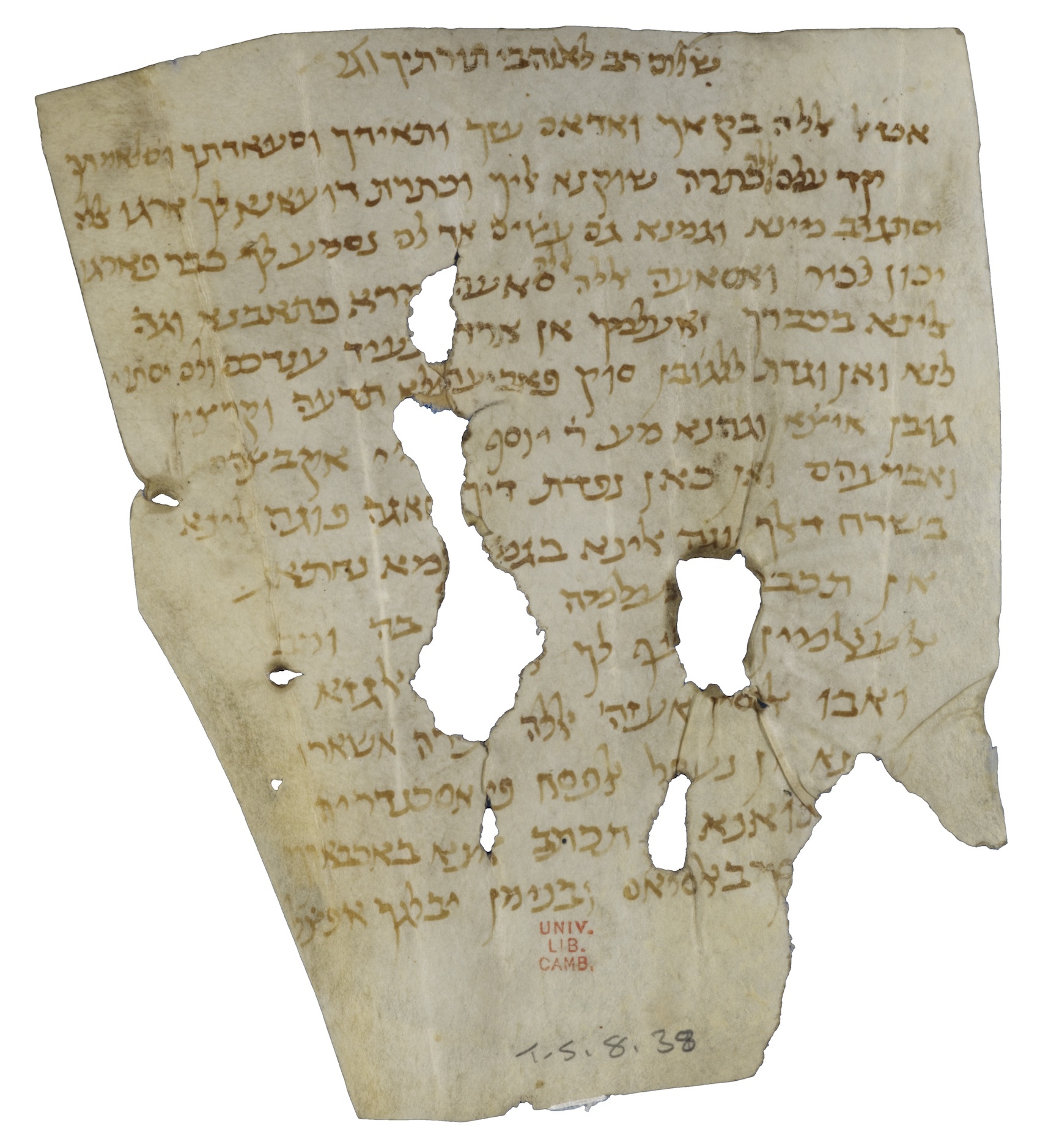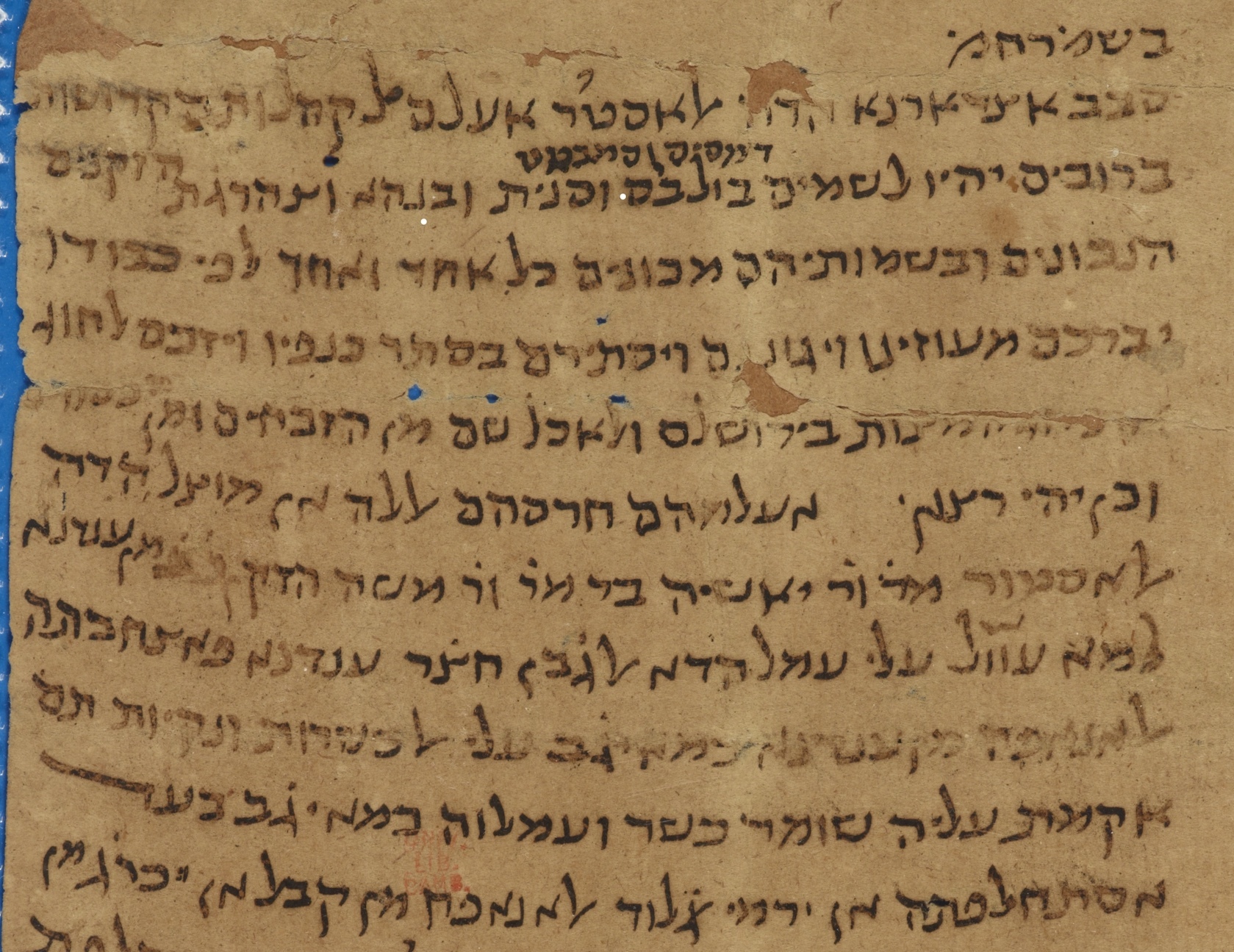Call the (medieval) Cheesemonger

On this National Cheese Day, I thought I would take a look at what traces of cheese we can find among the documents in Cambridge Digital Library. Cheese is mentioned frequently in the Genizah world, as it was a mainstay of the medieval diet: milk could not be preserved, and so most dairy was consumed in the form of various kinds of cheese, hard and soft, salted, brined or fresh. It was popular throughout the Genizah world and in Egypt it was a favourite food of both the poorest and the richest sections of society. The Baḥrī Mamlūk sultan an-Naṣīr Muḥammad (d. 1341 CE), for instance, was apparently particularly fond of the Cairene snack of fried cheese – جبن مقلي, jubn maqlī (Lewicka 2011: 61), a popular way of consuming cheese in the Middle East – and increasingly here; I’ve eaten my way through a fair number of fried halloumi burgers (both artisanal and more perfunctory) in recent years.
In the Jewish community, cheese was a foodstuff that required supervision during its production, transport and sale in order for it to remain kosher and thus acceptable to eat. Consequently, we find frequent documents attesting to its kosherness. The most frequently cited of these is T-S 10J6.14, where a Karaite merchant who was bringing 300 moulds of cheese – a total of thirty pounds (raṭl) – from Jerusalem, required a certificate of kashrut in order to allow them to be sold to Rabbanite Jews in Egypt. The document, which is entirely in Hebrew, states that the cheese was originally of Rabbanite manufacture (ממעשה הרבנים, and not, as in Moshe Gil’s earlier mis-rendition, produced ‘on the Mount of Olives’), and therefore was OK for Rabbanites to purchase (והם כשרים וטובים לקנות מהם הרבנים).
Another certificate of kashrut (heḵšer) is T-S 8J6.13, from 13th-century Alexandria, which attests in Judaeo-Arabic to the kosher status of imported אלג׳בן אלכשר אלרומי אלסקלי, ‘kosher Sicilian Rūmī cheese’. Rūmī here is ‘Roman’ or ‘Byzantine’, and was probably a hard cheese that stored and travelled well (Lewicka 2011: 233–4). Rumi cheese (جبنه رومى, gibna rūmī, in Egyptian dialect) is still popular today in Egypt, although it is locally manufactured rather than imported. Lewicka (2011:234) calls it ‘hard, dry, sharp, climate-proof’.
The kosher certificate T-S 13J4.8 is also for imported Sicilian cheese, in this case from Messina. Large quantities of cheese seem to have been imported into Egypt from Sicily. T-S AS 147.24 concerns the sale of 160 Jarwī pounds (a measurement used particularly for oil and other foodstuffs) of ג׳בן צקלי, Sicilian cheese, 95 moulds’ worth.
Not all cheese was imported; Egypt made a lot of its own too. A short note of receipt in Judaeo-Arabic, T-S 8J7.1, is written and signed by Abraham b. Nathan (famous as the son of the usurper of the Palestinian gaonate in the 1040s). Abraham acknowledges receiving a consignment of cheese and its certificate of kashrut (כתאב אנה כשר), and, after selling some, sends the rest on to Fusṭāṭ (Miṣr) under the close supervision of a shomer (שומר, ‘custodian’). The cheese is a special kind, jubn ḵaysī (גבן כַיסי, ‘Khaysī cheese’). This cheese is mentioned favourably in Arabic sources, and was clearly a highly valued commodity. It was manufactured in the region of al-Khays, where the cows (and buffalo) produced a particularly rich and succulent milk. No such cheese by that name is still produced in Egypt, but the cheese of Damietta, gibna dumyāṭī (also gibna bēḍa), closely resembles it in its manufacture, and it lays claim to ancient roots (Lewicka 2011: 235–7). It’s now apparently an extremely popular type of cheese in Egypt.
That Jews themselves would be involved in the production or importation of cheese is not surprising, given that it requires supervision to qualify as kosher. T-S 13J13.20 is written in Judaeo-Arabic by Abraham b. Shabbetay (early 12th c.), head of the community in Minyat Ziftā, and it informs the congregations of the Nile Delta that the bearer of the document (מוצל הדה אלאסטור), Josiah b. Moses, is able to produce kosher cheese and supervise its production. He had been given sources of rennet (אלאנאפח, ‘rennets’, from Arabic minfaḥa) and been instructed in how to handle them to ensure the kosherness and hygiene (אלכשרות ונקיות, Hebrew words because these are halakhic standards) of his finished product.

Detail of T-S 13J13.20: Abraham b. Shabbetay attests that Josiah b. Moses can be trusted with their cheese needs.
We find a number of people in the Genizah who make cheese. Ibrāhīm b. Fakhr, in T-S 13J24.17 has the occupation אלגבאן, ‘the cheese-maker’ (jubbān, جبان). However, Mark Cohen (2005:108) notes that the occupation occasionally occurs in the lists of those receiving charity in the community. This suggests it might have been an insecure occupation, subject to fluctuating market conditions or seasonal scarcities of raw material.
Alongside the major importers or manufacturers, we also come across more apparently entrepreneurial cheese-mongers. T-S 8.38 is a parchment letter from Baalbek, in Lebanon, from two brothers, Solomon and Levi (מן שלמה ולוי אלבאעלבכיין) to their father Mawhūb, who must be back in Egypt. They tell him that if he knows of a market for cheese then he should sell now, and not hang on to it (ואן וגדת ללג׳ובן סוק פאביעה ולא תדעה), and they are sending him, with a R. Joseph, two additional whole wheels of cheese (קרצין גובן) for him to sell. There was clearly money in cheese, if market conditions were right.
The evidence of the Genizah parallels what contemporary Islamic chroniclers write, and echoes can be found in the Egyptian food culture of today. The Egyptian populace enjoyed a whole range of cheese, of different types and of local manufacture or foreign import. It was a vital foodstuff and, thanks to the laws of kashrut, one that required the close supervision of suitably qualified authorities. Unlike say meat, which tended to be consumed in the local area in which it was slaughtered, cheese – a long-life product - could travel great distances from its place of manufacture, and hence generated a bureaucratic paper trail of kashrut that can be found in dozens of fascinating fragments preserved in the Genizah today.
Bibliography
Cohen, Mark R. (2006) The Voice of the Poor in the Middle Ages: An Anthology of Documents from the Cairo Geniza.
Lewicka, Paulina B. (2011) Food and Foodways of Medieval Cairenes: Aspects of Life in an Islamic Metropolis of the Eastern Mediterranean.

Add new comment